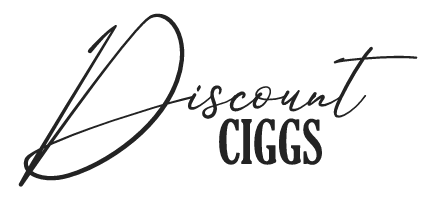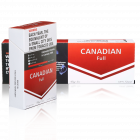Packaging and Freshness
The scent of fresh tobacco is an indulgence for smokers and enthusiasts alike. Ever pondered how this freshness stays intact? It's largely thanks to packaging, which plays a crucial part in keeping tobacco's essence alive.
The role of packaging in preserving tobacco freshness
When it comes to tobacco brands, packaging isn't merely for show. Its primary role is to make sure tobacco leaves keep their innate moisture and scent. Think of getting a premium cigar, only to discover it lacks its rich taste. Disheartening, isn't it? Packaging serves as a shield, warding off environmental elements such as moisture, light, and air that threaten tobacco's integrity.
Innovations in packaging: vacuum sealing, freshness pouches, and humidity control
The world of tobacco has always been one of transformation, and packaging is no exception. In recent times, the industry has undergone a renaissance with breakthrough packaging methods tailored to enhance product longevity and freshness. Take vacuum sealing, for instance. This ingenious technique pulls air out of the container, granting the tobacco inside an extended shelf life. When you couple this with the fact that lesser air means reduced oxidation, the benefits multiply. Tobacco products remain fresh, robust in flavor, and free from the adverse effects of external elements for a longer duration.
On the flip side, freshness pouches have emerged as the unsung heroes of modern tobacco packaging. These pouches have one core mission: to seal in that intoxicating tobacco aroma. Every time you unzip or unseal a pouch, the experience is akin to witnessing tobacco being freshly packed, almost as if time stood still since its sealing. But innovations don't stop there. Humidity control has entered the arena, acting like tobacco's personal protector. Regulating the moisture levels within the packaging guarantees the tobacco stays at its peak freshness. It's akin to having an in-built guardian that ensures the tobacco's environment is just right, preventing it from getting too dry or overly moist.
The evolution of tobacco packaging over the years
The journey of tobacco packaging is a tale steeped in history and transformation. If we wind the clock back to the 1800s, wooden boxes were the hallmark of tobacco packaging. These were sturdy, practical, and offered a touch of rustic charm. Fast forward a century, and the 20th century heralded the era of tin containers. These metal tins, often adorned with intricate designs and brand logos, became synonymous with tobacco storage. They were not only durable but also became collectible items for many. Their popularity skyrocketed, marking a significant shift from the wood-dominated era.
Yet, as the decades rolled on, the industry witnessed a paradigm shift. The focus transcended beyond mere aesthetics. Modernity introduced sleek pouches crafted from materials that prioritized product preservation. Manufacturers became acutely aware of the dual role packaging played: being visually appealing while ensuring the tobacco within remained fresh and flavorful. The advancement in materials and design meant that tobacco could retain its quality over extended periods. This evolution highlights the industry's adaptability and its relentless pursuit to combine form and function seamlessly.
Sustainable packaging solutions and their impact on freshness
In today's eco-conscious world, sustainability isn't just a buzzword; it's an imperative. The shift toward green solutions has made a noticeable mark in various industries, and tobacco packaging is no exception. Biodegradable pouches and other eco-friendly packaging alternatives are emerging as the frontrunners in this green revolution. These aren't just environmentally responsible choices; they also serve a functional purpose. The pressing question many have is whether these sustainable options can hold their own in terms of preserving tobacco freshness, especially when pitted against their traditional, less eco-friendly counterparts.
Delving deeper into the capabilities of sustainable packaging, one finds that they not only match the performance of conventional packaging but often surpass it. The advanced materials used in these eco-pouches are designed to be robust, ensuring the tobacco inside remains as fresh as the day it was packed. But the benefits extend beyond mere product quality. Embracing sustainable packaging translates to a reduced carbon footprint, making it a favorable choice for both the planet and the consumer. In essence, these green solutions marry the best of both worlds: impeccable tobacco quality and a nod to environmental responsibility. A harmonious blend of functionality and eco-friendliness, wouldn't you agree?
Consumer feedback and preferences related to packaging
In the world of tobacco, understanding consumer preferences is paramount. Overwhelmingly, consumers crave one thing: the enduring freshness of their tobacco products. Their feedback is clear and resounding: packaging plays a significant role in their purchasing decisions. The research underscores this sentiment, revealing a strong inclination towards packaging designs that offer extended freshness. But there's another aspect that's capturing attention: convenience. The modern consumer is on the lookout for packaging that’s not just protective but also easy to handle. The last thing anyone desires is battling a stubborn pouch, especially after a tiresome day. In essence, while quality remains king, the ease of use is quickly becoming a close second in consumer packaging preferences.
The correlation between price and packaging
We've all been cautioned not to make judgments based on appearances. However, in the marketplace, appearances—or in this case, packaging—often carry significant weight. While visually appealing packaging can undoubtedly draw consumers in, it often comes with a higher production cost, potentially leading to a heftier price tag on the shelf. This interplay between cost and packaging quality presents an intriguing dynamic. On one hand, businesses seek to entice customers with eye-catching designs; on the other, they must grapple with the financial implications of such decisions. Nevertheless, consumer behavior suggests an interesting trend: many are not only willing but also prepared to shell out more for products with superior packaging, especially if it assures them of the product's freshness and quality. In essence, for many shoppers, the promise of quality and freshness, often implied by top-notch packaging, justifies a slightly steeper price.
Future trends in tobacco packaging
Peering ahead into the future of tobacco packaging, the horizon seems to be merging technological advancements with sustainable practices. Imagine a world where your tobacco pouch or box is no longer just a passive container. Instead, it's equipped with intelligent sensors that notify you when the contents are losing their optimal freshness. Picture getting a subtle alert or a nudge, suggesting it might be time to enjoy your product or perhaps even reorder. Beyond that, the industry is moving towards more eco-conscious solutions. With the increasing global emphasis on sustainability, it wouldn't be surprising to see tobacco packages that are both tech-smart and environmentally friendly. This intersection of digital intelligence and green practices paints a picture of a future that is not only efficient but also responsible. With these anticipated shifts on the horizon, it's evident that the world of tobacco packaging is on the brink of a transformative era.
Challenges faced by manufacturers in ensuring freshness through packaging
In the quest to deliver the freshest tobacco products, manufacturers often navigate a labyrinth of challenges. One of the primary dilemmas they face is identifying the perfect packaging material. It's a tightrope walk, balancing between the cost implications of premium materials and the need for effective preservation of the tobacco's essence. The ideal packaging solution is one that doesn't break the bank yet offers the highest degree of freshness protection.
Beyond the material selection, there's another sinister challenge lurking in the shadows: the proliferation of counterfeit products. These knock-offs, often boasting inferior packaging standards, can jeopardize the reputation of genuine manufacturers. Counterfeit products not only undermine the trust that brands build with their consumers but can also pose risks in terms of product quality and safety.
In sum, while the end goal is to provide consumers with the freshest tobacco experience, the journey towards that goal is fraught with obstacles. Manufacturers are in a constant tug-of-war, trying to make the best decisions for both their brand and their loyal customer base.
Comparing traditional packaging methods with modern techniques
Historically, the art of packaging was steeped in tradition and carried an intrinsic charm. One can easily reminisce about the days when tobacco was delicately wrapped in leaves, a practice deeply rooted in cultural customs and simplicity. These methods, while beautifully organic, were more about maintaining a connection to the earth and to the origins of the product. They offered a rustic appeal, making the process of unwrapping tobacco almost ritualistic. However, these old-world techniques, despite their allure, weren't necessarily the most efficient. While they gave a nod to the tobacco's natural essence, they sometimes fell short in preserving that fresh, robust flavor over extended periods.
Fast forward to the present day, and the landscape of packaging has been revolutionized. Modern technology has ushered in an era of advanced packaging solutions that are leagues ahead in terms of efficiency. These new-age methods, employing materials and techniques unknown to our predecessors, are designed not just to maintain the freshness of tobacco but to significantly prolong it. Moreover, there's a conscious effort to elevate the overall user experience. From easy-to-open packages to those equipped with freshness indicators, modern packaging endeavors to merge functionality with aesthetics. It's an embodiment of how innovation can transform a simple task like packaging into a sophisticated, user-centric process. Today's packaging doesn't just store; it interacts, informs, and impresses.
Conclusion
In the world of tobacco, packaging plays a pivotal role that goes beyond mere aesthetics. It stands as the steadfast guardian, ensuring the tobacco's core attribute - its invigorating freshness - remains untainted. As the wheels of innovation churn, propelled by advancements in technology and an increasing emphasis on sustainability, the horizon promises a slew of groundbreaking packaging solutions. These forthcoming innovations are poised to cater to consumer desires while encapsulating the rich essence of tobacco. The journey ahead in the packaging realm appears both thrilling and promising.
FAQs
Why is freshness crucial for tobacco?
Freshness is paramount as it retains the tobacco's natural aroma, flavor, and overall quality.
How does vacuum sealing benefit tobacco products?
Vacuum sealing removes air, preventing oxidation and degradation of the tobacco, thus prolonging its shelf life.
Are sustainable packaging solutions as effective as traditional ones?
Yes, modern sustainable packaging techniques are designed to offer both eco-friendliness and effective preservation of freshness.
How do counterfeit products impact the packaging industry?
Counterfeit products often compromise on packaging quality, which can lead to subpar preservation of tobacco freshness and pose risks to consumers.
What can we expect from the future of tobacco packaging?
The future holds a blend of technological innovations and sustainable solutions, ensuring both freshness and environmental responsibility.
References
- Truth Initiative (for international comparisons): truthinitiative.org
- Laws Justice: laws-lois.justice.gc.ca
- Leave The Pack Behind: www.leavethepackbehind.org



